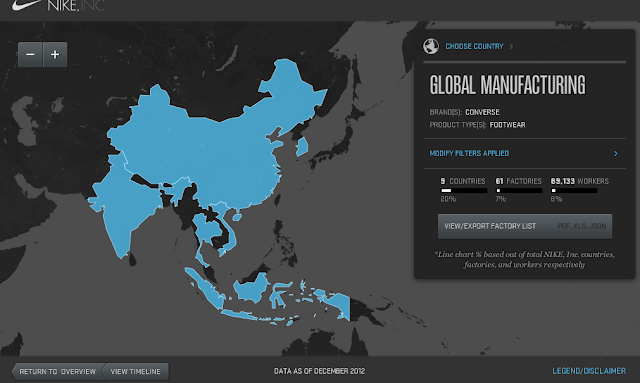1. Steger talks about the tension between localism and globalism in the images of Osama Bin Laden's video broadcasts, and the irony of these images in regards to Bin Laden's contempt for the West. Do you agree with Steger? What are some examples in your own life where you can see this tension between local and global imagery?
I agree with Steger's opinion on the Bin Laden videos, the imagery was contradictory in the sense that Bin Laden's view on globalization and westernization is a negative one. Even if Bin Laden was representing himself with specifically only local items; unlike the Timex watch and the Kalashnikov he still is a subject to global media. Steger poses a good argument that without the technologies that sprouted from globalization, Bin Laden would not have been able to send out his video successfully. The line between local and global has become so blurry that even an "antiglobalizer" is subjected to pro-global activity without realization or intention. It is a system that you fall into without even full consciousness of your submission.
When thinking about tensions between the global and local in my everyday life I began by looking around my room at objects that I use and see everyday. The further I looked into this the more I realized that very little of my clothes and shoes were actually made locally even though they are represented as in a North American style. For example Chuck Taylor All Stars, which are a type of Converse shoe made by Nike. They have very American symbolism such as the red, white and blue logo, which is centred by a large blue star. The logo itself basically screams the American flag, while they also have a reputation as being an all American shoe, hence the name All Star. When I researched further into the areas as too where they are manufactured I discovered that majority of the factories for that style of shoe are actually in asia. The once very western shoe now has a new appearance to me, which also poses many questions such as: Do the people making the shoe realize the symbolism behind the logo? Do they resent the false logo that they are required to put on the shoe? Or do they even care that the only recognition they get for making the shoe is hidden on a little label on the inside while the United States gets all of the credit? What is western style if none of it is even made in the west.
http://www.nikeinc.com/pages/manufacturing-map
2. On pg. 10, Steger introduces his own concept of the global imaginary. What do you think he means by "imaginary"? How does this concept differ from globality?
When Steger refers to the global imaginary, I believe that he is referring to the to the understanding that everything is an active cog in the system of globalization, that grows and changes exponentially. Thus meaning there is no finite end to the evolution of globalization. This concept contradicts the idea of globility; globility is the idea of the world coming to a social, and conscious unity. If globalization is "the intensification and acceleration" of social relations it can never come to a complete global consensus. Globalization is a progression of a system, without the progression is it still globalization.

No comments:
Post a Comment